What does it take to be literate in an ever-changing, digital world? Click here to find out!
 How findings from Multiliteracies can help your students
How findings from Multiliteracies can help your studentsKey Insights
- Multiliteracies was perceived to be important for today’s world by both teachers and students.
- The Multiliteracies project aimed to teach students to:
- Evaluate,
- Produce texts in a multimodal format.
- Teaching multiliteracies promotes social equity by:
- Equipping students with skills needed, especially for future workplaces.
- Preparing students for communicative demands in the digital age.
- Teaching packages were developed to tackle teachers’ uncertainties in designing lessons for multiliteracies.
- Teachers benefitted from these packages by:
- Having greater confidence in their approach to teaching multiliteracies.
- Reflecting on their personal growth.
- Most students have higher scores in the post-test after being taught with materials from the packages.
 Introduction to Multiliteracies
Introduction to Multiliteracies
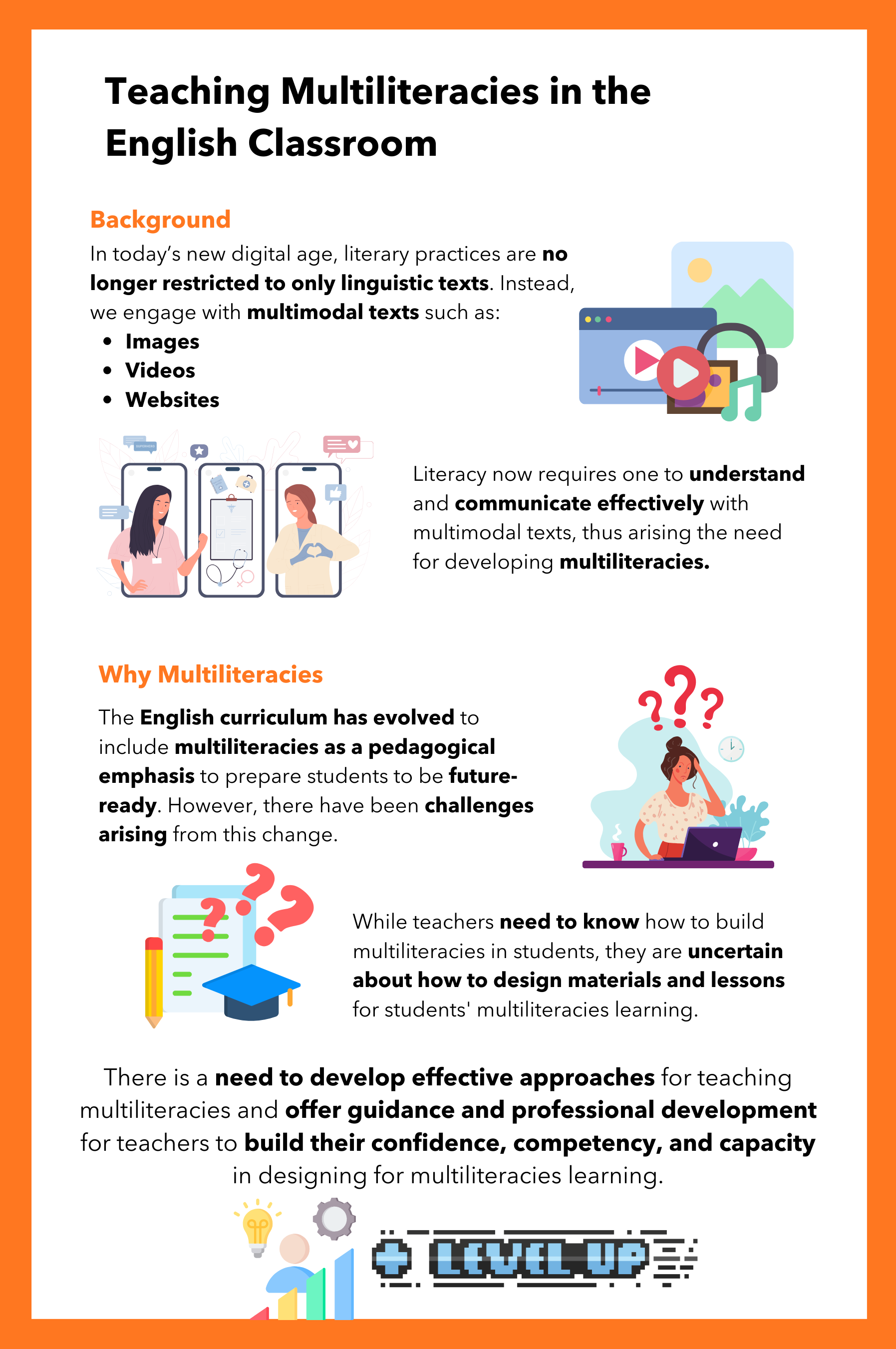
 Research Methodology
Research Methodology
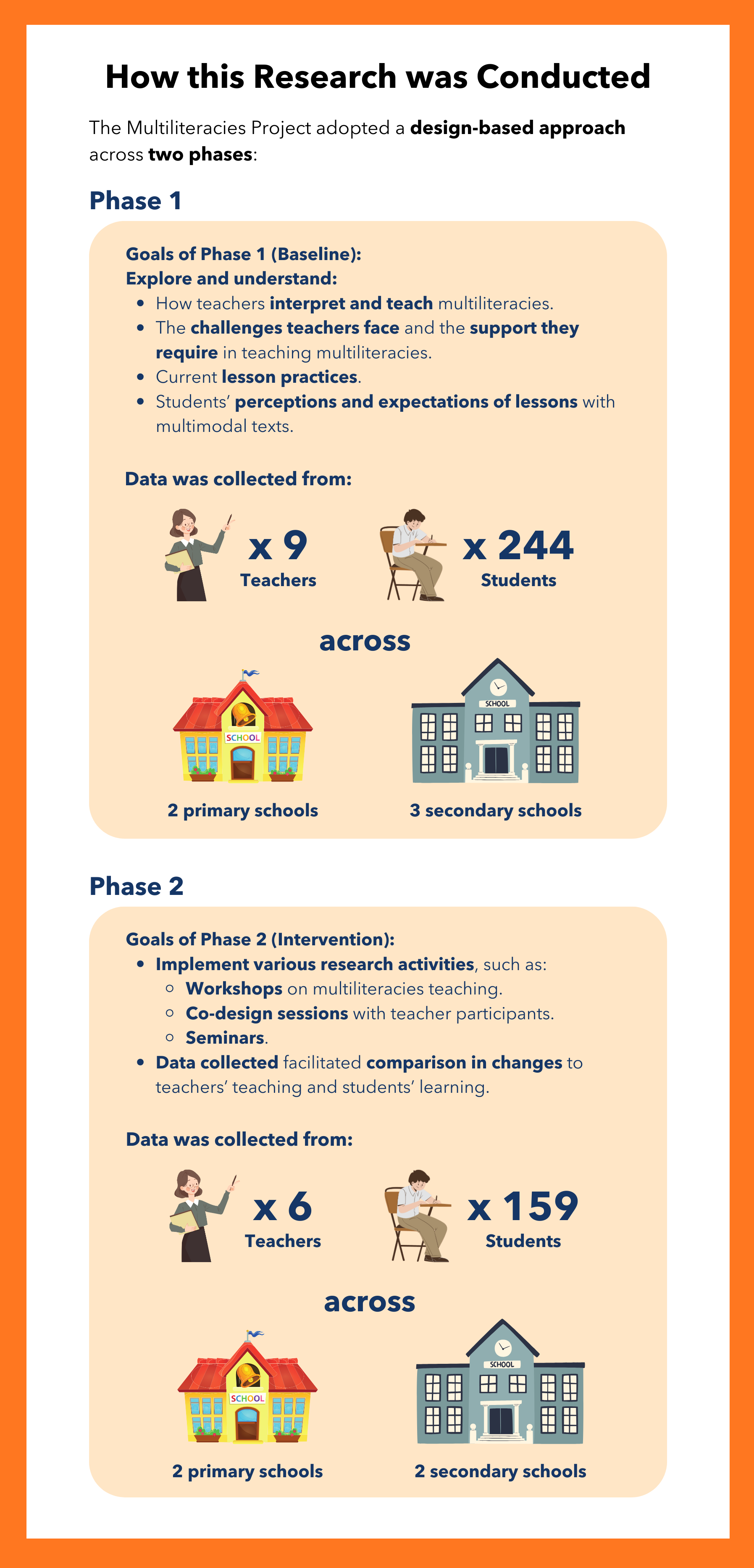
 What Does This Mean for Teaching and Learning?
What Does This Mean for Teaching and Learning?
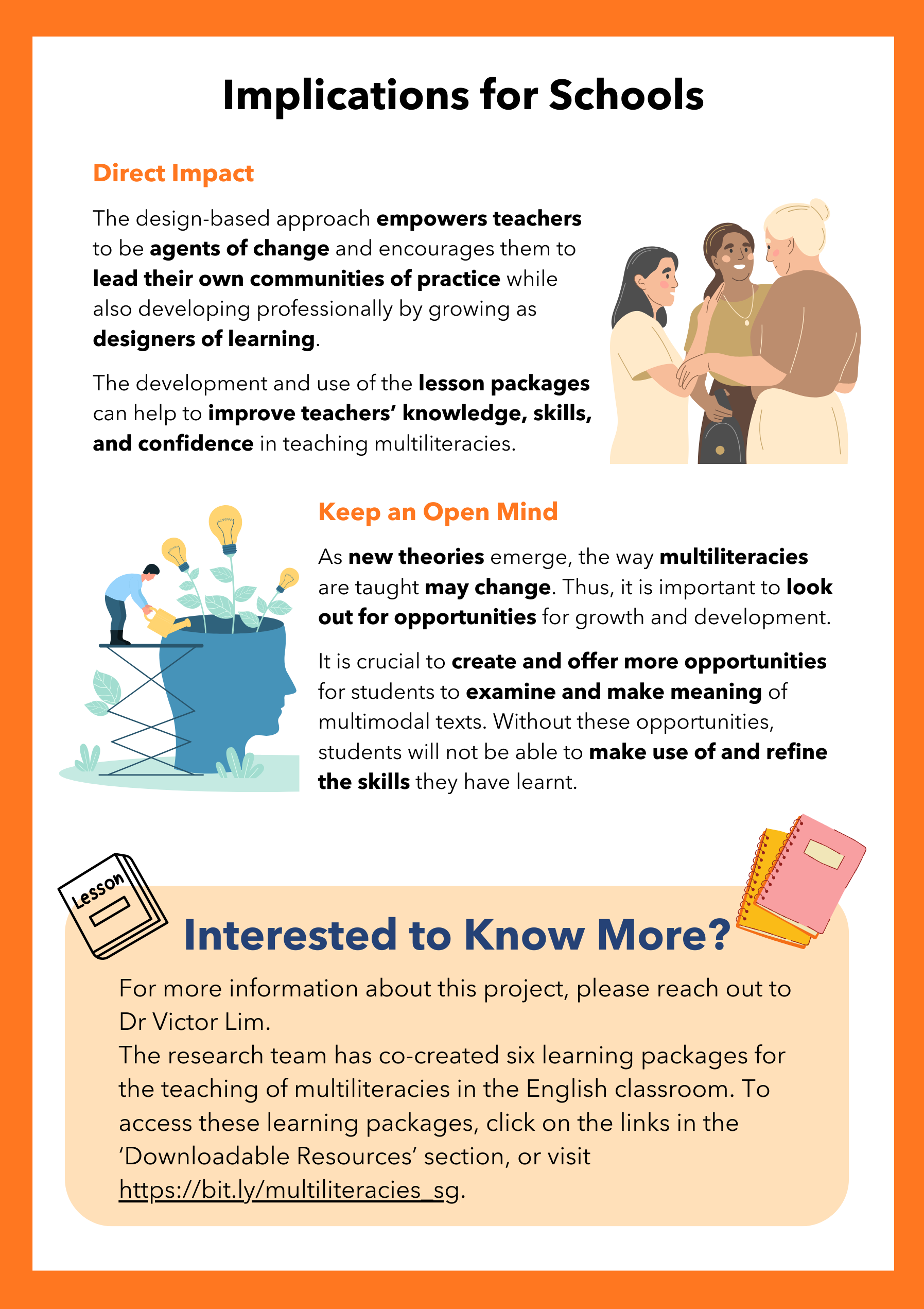


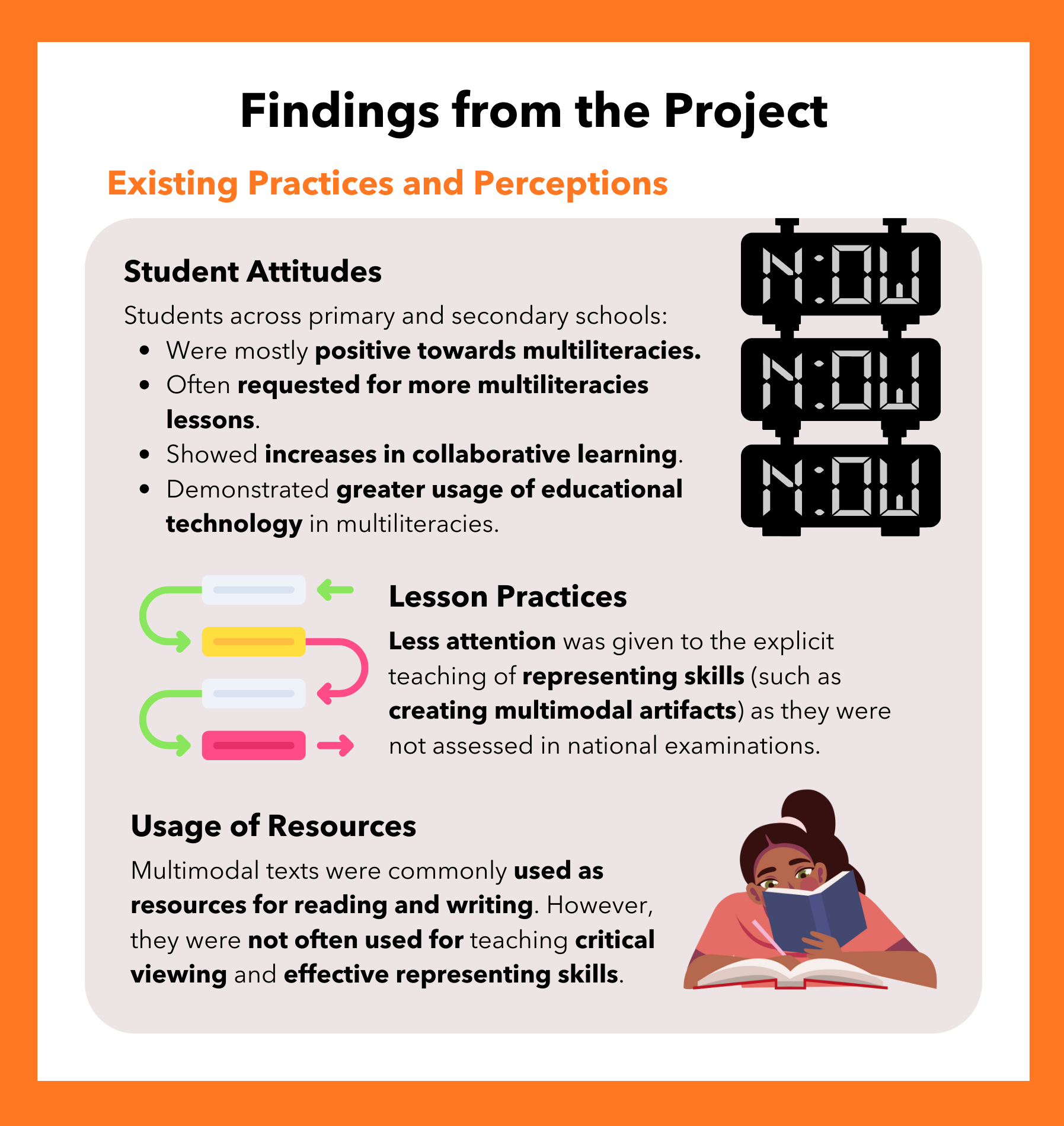

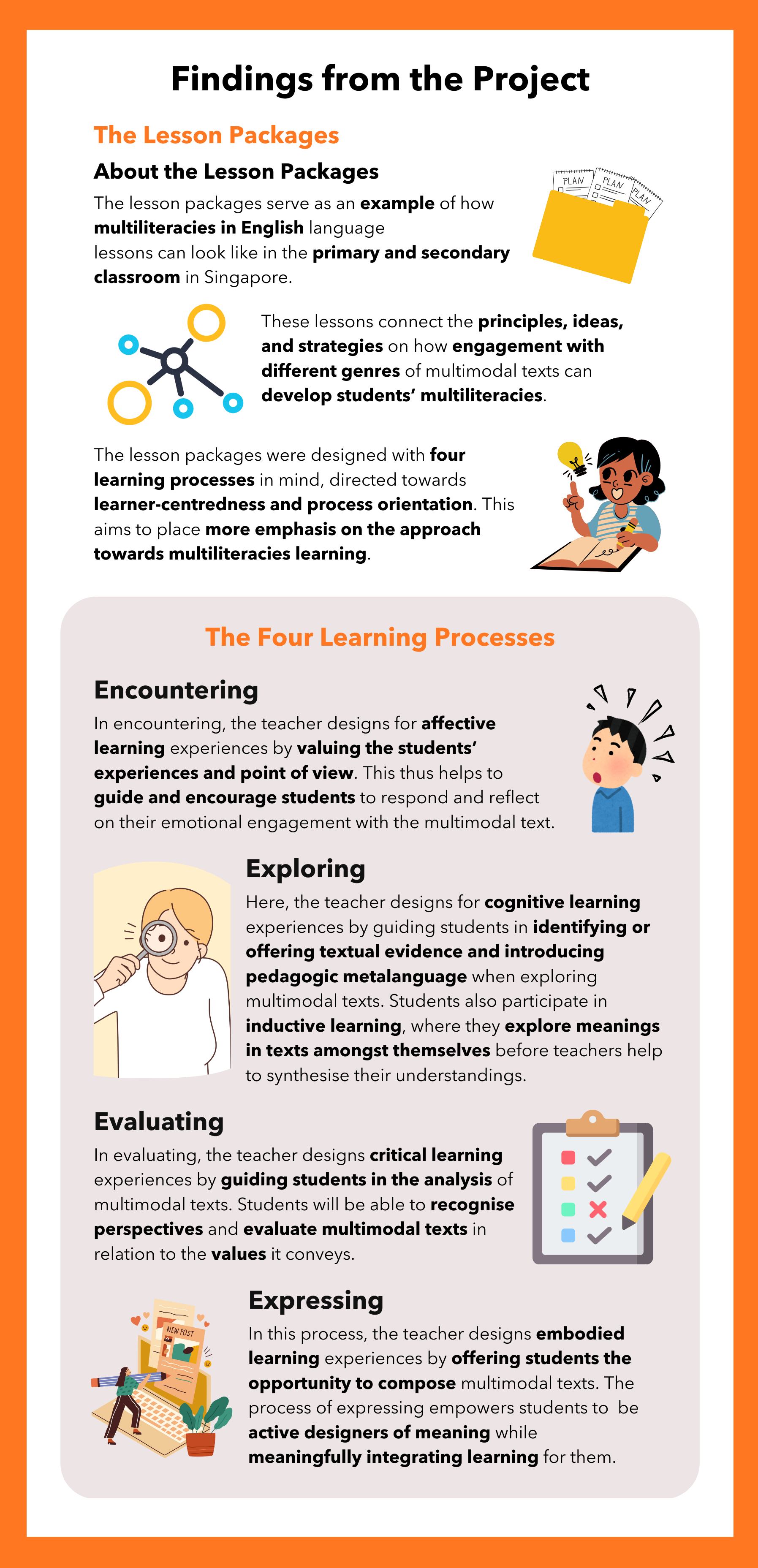
![]() Research Team
Research Team